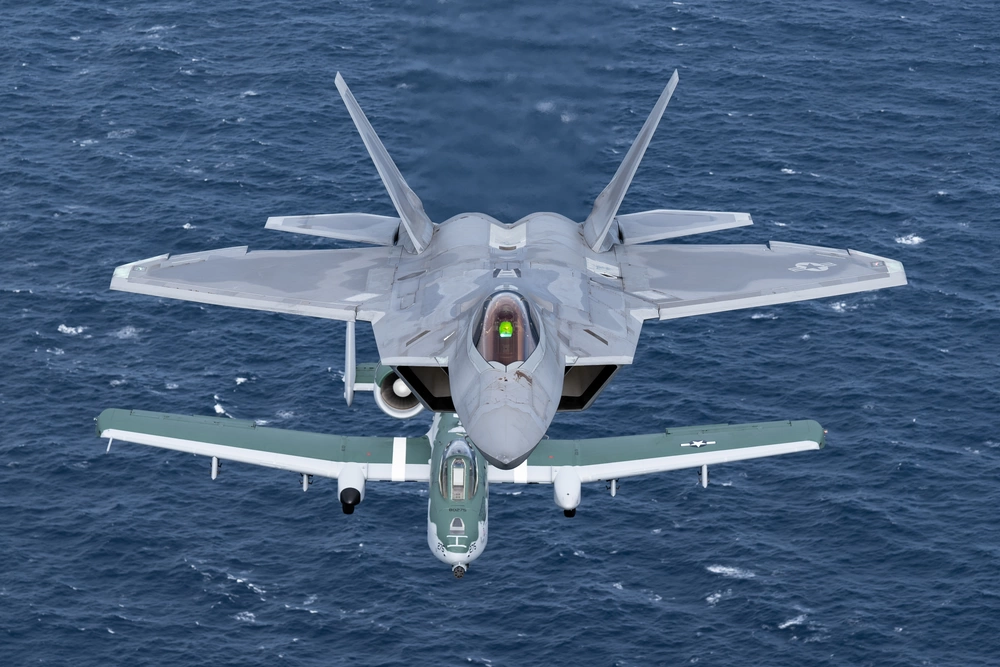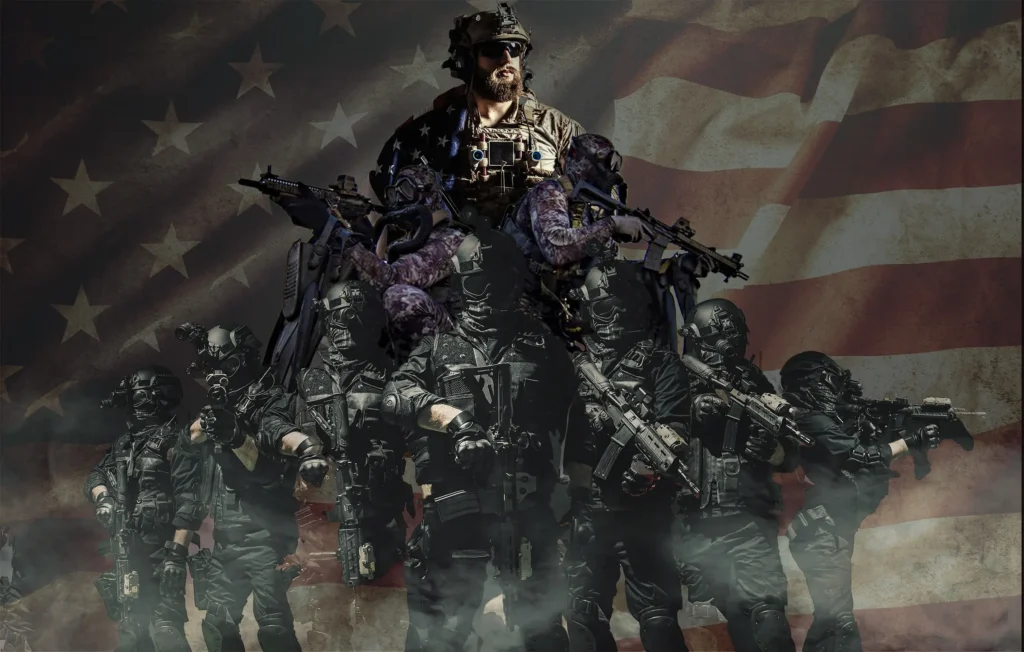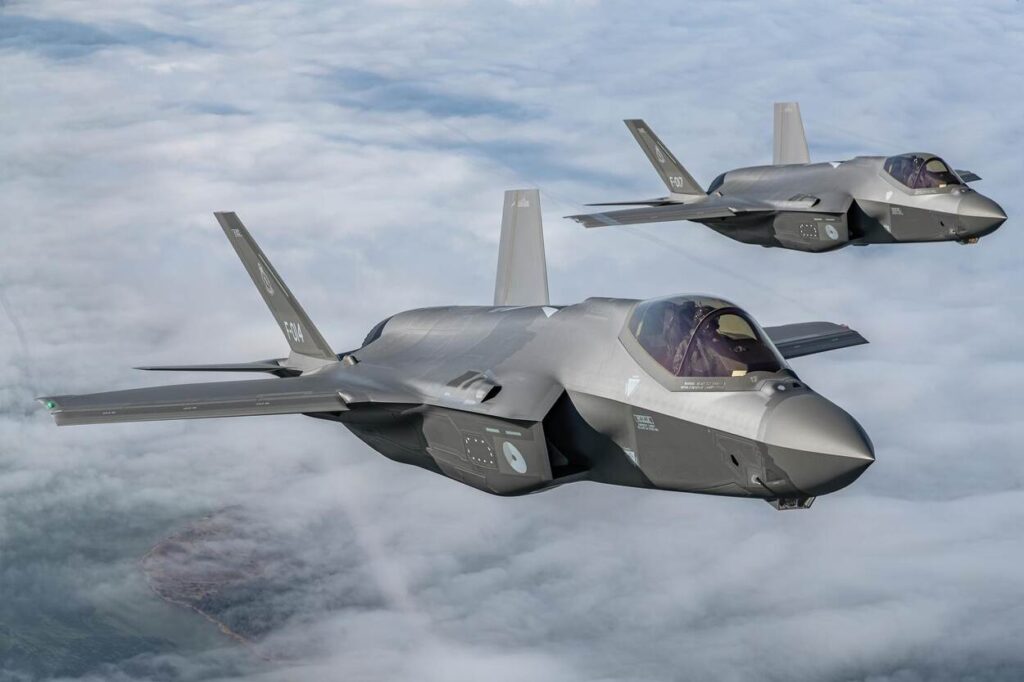Why the Navy never put the F-22 on aircraft carriers
- By Alex Hollings
Share This Article

America’s F-22 Raptor is widely touted as the most capable air superiority fighter on the planet, thanks to a combination of stealth, speed, and maneuverability. It makes sense, then, that Congress pressed the U.S. Navy to consider fielding a slightly different iteration of the Raptor for duty aboard its Nimitz-class supercarriers back in the early ’90s.
In order to make the F-22 suitable for carrier duty, Lockheed Martin would have had to incorporate a number of significant changes to the F-22’s design.
Alongside the usual changes one can expect out of a carrier-capable aircraft (things like a strengthened fuselage and added tail hook), a Navy variant of the F-22 would have needed to incorporate a variable sweep-wing design similar to that employed by the Navy’s existing F-14 Tomcats. This addition, perhaps more than any of the others, would have been a real challenge for engineers to contend with. Sweep wings were expensive to maintain to begin with, but incorporating a sweep-wing design into a stealth aircraft may have been nearly impossible without sacrificing some degree of low-observability.
Get the full story on why the Navy never managed to field an F-22 “Sea Raptor” in the video below:
What makes the F-22 so special?
The Lockheed Martin F-22 Raptor was the world’s first operational stealth fighter, and ushered the new era of 5th generation aircraft.
As the first aircraft of the generation, much of what we commonly consider requirements for a “5th gen” fighter is derived from capabilities the F-22 first brought to the table.
The F-22 Raptor was the first fighter ever designed with an emphasis on stealth and low observability right from the start. While 4th generation fighters like the F-15 Eagle, F-16 Fighting Falcon, and F/A-18 Super Hornet all employ some measures to reduce their radar signature, stealth is an intrinsic part of the F-22’s design.
But it’s not just about being sneaky – the F-22 can also fly at speeds in excess of Mach 2.25 and execute incredibly acrobatic maneuvers thanks to its thrust vectoring capabilities. It can also sustain supersonic speeds without the use of its afterburner, which is a capability that can’t be found in any other stealth fighter in the world.
The world’s only operational 5th generation fighters are the American F-22 and F-35; the Russian Su-57, which has only seen very limited production; and the Chinese J-20 and J-35 with the last one entering service in September 2025.
Editor’s Note: This article was originally published in April 2021. It has been edited for republication.
Feature Image: U.S. Air Force Maj. Josh Gunderson, F-22 Demonstration Team commander, flies above Maj. Cody Wilton, A-10 Demonstration Team commander, during a special formation flight over Fort Lauderdale, FL. Nov. 20, 2020. This unique formation served as a salute to all the men and women serving in the Air Force all across the world. (U.S. Air Force photo by Lt. Sam Eckholm)
Read more from Sandboxx News
- Israeli Patriot air defense systems operate in Ukraine, according to Zelensky
- Preparing to foil a possible highjacking in Miami with the Delta Force
- Lockheed Martin’s ‘Vectis’ promises to be the most advanced drone fighter ever built
- Army marks first aerial drone-on-drone kill as new lethal UAS course gets underway
- Britain starts construction of its final Dreadnought class nuclear submarine
Related Posts
Sandboxx News Merch
-

‘Sandboxx News’ Dad Hat
$27.00 Select options This product has multiple variants. The options may be chosen on the product page -

‘AirPower’ Golf Rope Hat
$31.00 Select options This product has multiple variants. The options may be chosen on the product page -

A-10 ‘Thunderbolt Power’ Poster
$22.00 – $28.00Price range: $22.00 through $28.00 Select options This product has multiple variants. The options may be chosen on the product page

Alex Hollings
Alex Hollings is a writer, dad, and Marine veteran.
Related to: Airpower

The social hierarchy of US special operations units

The 2 biggest lies ‘Top Gun’ taught you about military aviation

Air Force awards contract for its Next-Generation Penetrator bunker-buster bomb

NATO shoots down Russian drones over Poland marking a first for the alliance
Sandboxx News
-

‘Sandboxx News’ Trucker Cap
$27.00 Select options This product has multiple variants. The options may be chosen on the product page -

‘AirPower’ Classic Hoodie
$46.00 – $48.00Price range: $46.00 through $48.00 Select options This product has multiple variants. The options may be chosen on the product page -

‘AirPower’ Golf Rope Hat
$31.00 Select options This product has multiple variants. The options may be chosen on the product page -

‘Sandboxx News’ Dad Hat
$27.00 Select options This product has multiple variants. The options may be chosen on the product page
